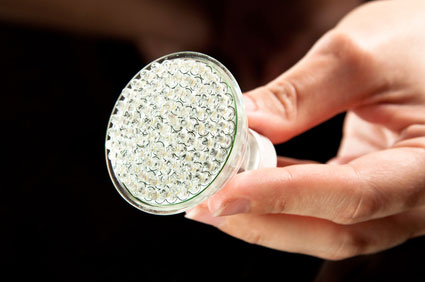[vc_row][vc_column width=”1/3″][vc_single_image image=”1371″ css_animation=”left-to-right” img_link_target=”_self” img_size=”full”][dt_gap height=”20″][/vc_column][vc_column width=”2/3″][vc_column_text]
The changing world of mandated new lighting energy efficient bulbs
At Kaufman Homes we have found Customers of new homes or remodels experiencing the changing of now partially mandated more energy efficient type lighting. Change is not always easy but eventually energy efficient lighting and bulbs will be a way of life that we will get used and the payback will be lowered energy costs.
The average American home has had electric light fixtures for about 90 years. The simple act of turning on the lights is becoming more complex. Now we have to consider the choice of LED, fluorescent or (for a little while longer) incandescent.
Technology has changed and that has caused standards to change as well. Our good ol’ standard 60 watt incandescent bulb is being ordered out of existence (by 2012) and replaced with more energy-efficient bulbs. For someone remodeling or building a new home, there are regulations. The city currently requires a certain number of energy-efficient lights to be installed at the time of completion of certain projects.
With CFLs and LEDs replacing incandescent lights, you are more likely to hear the term “lumen” or “lux” than “watts” when evaluating the new light bulbs. But what does it all mean?
Custom under-cabinet and can lighting in ceilings can eliminate the need for multiple lamps and increase efficiency, allowing you to turn off all lights from one central light switch.
Watts is a measure of energy; lumen is a measure of visible light.
A standard incandescent bulb only generates about 12 lumens per watt. So a 60 watt bulb creates 720 lumens. You’ll find this listed on the light bulb package. Easy enough, but now you’ll also see the light level measured in something called “lux.” Hold onto your hat: a lux is defined as one lumen per square meter. Wait, how’s that again? The lux measures light per area.
To illustrate this, 1,000 lumens in a room that is only one square meter will give 1,000 lux’ of light to that area, but that same 1,000 lumens in a room that is ten square meters only lights up the room to 100 lux. Let’s break that down to something we can all understand. A moonlit night might be .27 to 1 lux. An average living room is about 50 lux. An office might be 320 to 500 lux. And a bright day–sunglasses required–is 32,000 to 100,000 lux, or more.
Light experts will also talk color spectrum. Lumens are most visible to the human eye if they are emitting light in the yellow-green spectrum–some 555 nanometers in wavelength. Initially, LED’s gave off a bluish light. That’s improving. The language on the box might indicate which color it favors. There have been complaints that LED’s do not emit the red spectrum, so red objects will appear somewhat grayish under them. Further, LEDs have a focused beam, and up to now have been great for spotlights, but less acceptable for interior illumination in homes. This is evolving, too.
On the “bright side,” the new LED bulbs may use up to 80% less energy than incandescent.
(They also don’t have a filament that will break when shaken like an incandescent bulb does.)
The light spectrum of CFL’s is similar to an incandescent and they even fit in the old light fixtures. They use significantly less electricity than a traditional bulb but they also cost significantly more. They are supposed to last longer, although we haven’t personally found that to be true. Furthermore, CFLs, like regular fluorescents, contain mercury, a highly reactive, toxic heavy metal. Aside from bringing this substance into the home, which may be objectionable, they pose a disposal problem because they cannot be thrown into municipal garbage collections. All CFLs may be taken to the County Household Hazardous Waste (HHW) Facility, at no charge. Home Depot also accepts unbroken CFLs at no charge.
I know that change is not always easy, but soon a new energy code which comes fully into effect in 2012 will make it very difficult to find anything but the new types of energy efficient bulbs and fixtures. I have observed that many of the larger stores are carrying less and less incandescent bulbs, In fact I went to Lowes recently to buy some incandescent bulbs and there was only a small supply available. Fortunately most all of our current light fixtures will accommodate a lot of the energy efficient bulbs.
Building a new home or remodel will mean more planning and understanding of all the options available. At Kaufman Homes we are committed to helping our customers with the changing lighting world.[/vc_column_text][dt_gap height=”10″][/vc_column][/vc_row]

